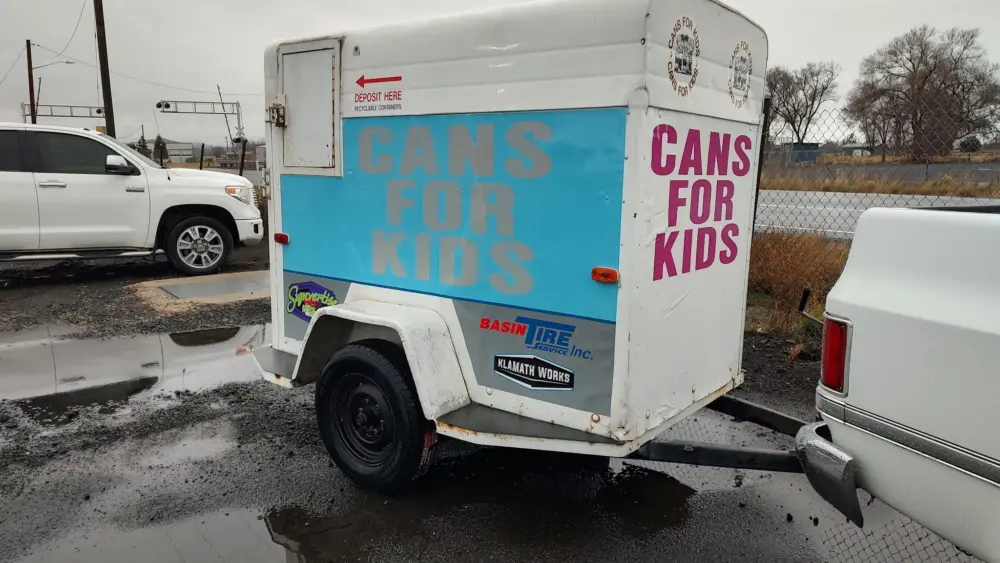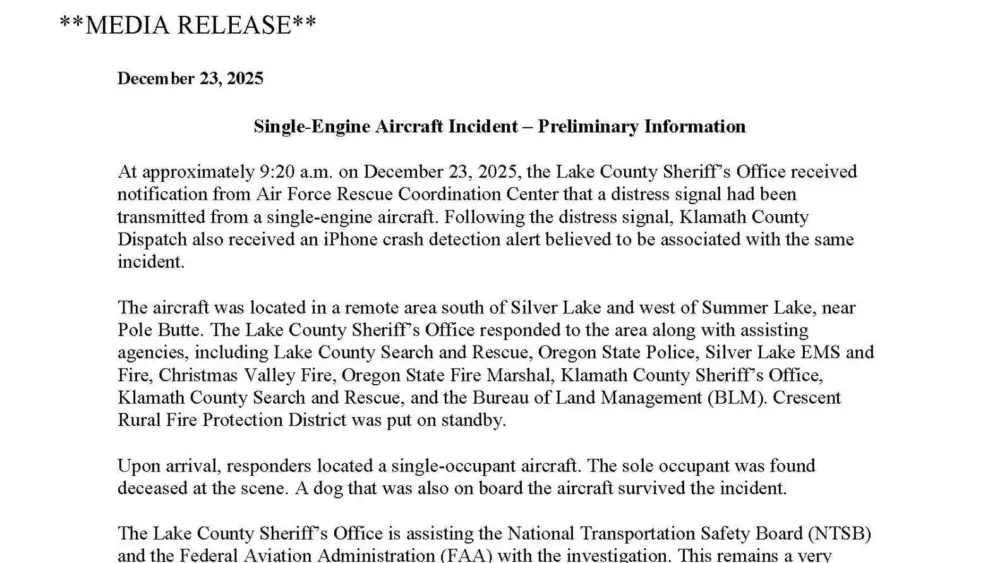KLAMATH FALLS, Ore. – In a letter to Commissioner Camille Calimlim Touton, Commissioner of the U.S. Bureau of Reclamation, Klamath Water Users Association (KWUA) outlines several pressing threats to the region’s wildlife, agriculture, and overall ecosystem, urging Reclamation to implement necessary measures to prevent avoidable disasters.
“We’re sounding an alarm for action. There are solutions readily available if we can get past treating water like tug of war,” said KWUA Executive Director Paul Simmons.
Immediate Threats and Required Actions
Need to prevent waterfowl disease
KWUA expresses deep concern over the high potential for disease outbreaks and mass waterfowl mortality in the Lower Klamath and Tule Lake National Wildlife Refuges. Symptoms of these outbreaks are already emerging with hot and shallow water. KWUA notes that a similar situation in 2020 led to an avian botulism outbreak that killed approximately 60,000 ducks.
KWUA calls on Reclamation to confer with refuge managers and irrigation districts to provide and establish a water flow through the refuge water bodies to mitigate this risk.
Need to prevent damage to agricultural communities
With little to no water received for three years in a row, this year, over 50,000 acres of family farms in the Klamath Project are facing unnecessary curtailment of water deliveries. Warren Act irrigators have water rights to apply 3.5 acre-feet per acre and longstanding contracts for delivery of water. Instead of farming the season, producers are instructed to stop irrigation based on only 0.6 acre-feet per acre.
Further, if hot and dry conditions continue without a break, the allocated Project supply of 260,000 acre-feet will likely be exhausted sometime in September.
There is water in the system that could satisfy the irrigation needs. In the letter, KWUA states, “Just like we need to avoid disaster for the Refuges, we need to avoid disaster for agricultural communities and bring this year’s crops to full production and harvest.”
Need for collaboration on stressors to aquatic species
The current water temperatures in the Klamath River far exceed levels lethal for salmon and other fish. The hottest water is coming directly out of Upper Klamath Lake at 78°F and rising. The elevated water temperatures are a well-known driver of fish disease. Particularly Ich, as demonstrated by the 2002 fish die-off on the Lower Klamath River.
KWUA urges Reclamation to immediately assess the potential detrimental impacts of all stressors to aquatic species including salmon
Future Operations and Need for Collaboration
“We are aware that discussions are underway among federal agencies, tribes, and the Klamath River Renewal Corporation about the possibility of special releases from Upper Klamath Lake to transport sediment that will be discharged into the mainstem Klamath River when the coffer dam at Iron Gate is breached in the coming months,” states the KWUA letter to Commissioner Touton. “Yet such flows are not provided for under the Bureau of Reclamation’s current “Interim Operations Plan” or the new proposed action. The sediment discharged to the Klamath River during the final breach of the coffer dam at Iron Gate will be additive to the considerable volume of fine organic sediment that appear to have already been deposited in the Klamath River as a result of dam removal.”
“We have concerns, this year and going forward, about potential direct and indirect impacts of the sediment,” continues the letter.
The Project should not and can not be held responsible for mitigating impacts of dam removal, this year or at any time in the future. But current and upcoming river conditions underscore the need for a new paradigm based on cooperation.
Additionally, KWUA highlights concerns about the apparent status of the remaining populations of Lost River and shortnose suckers in Upper Klamath Lake. This year’s fish monitoring for spawning and habitat use suggests a steep decline from last year.
Request for immediate action
“Farmers and ranchers within the Klamath Project have always been and continue to be willing to assist in the recovery of species and to work with other stakeholders to address their interests,” said the letter.
KWUA has invited Klamath Basin tribes to work with KWUA and its members to address these challenges, both immediate and long-term, in a new spirit of cooperation rather than resorting to positional bargaining over water. That attitude is reflected in KWUA’s participation in the memorandum of understanding for ecosystem recovery in the Klamath Basin.
“The spirit must become the norm in water management,” stated the letter.
KWUA urges leadership from the Departments of Interior and Commerce to embrace this attitude and exercise all influence and discretion to encourage other stakeholders to work together to address all interests and needs in the Klamath Basin, including those of farms and ranches in the Project.
The association calls on Reclamation to immediately attend to this year’s operational issues, particularly the immediate concerns with Refuges, water allocations for Warren Act contracts, and the likelihood of an end-of-season shortage of Project supply.
About Klamath Water Users Association (KWUA)
Since 1953, the KWUA is a 501(c)(4) non-profit corporation representing the interests of Klamath Project farmers and ranchers. KWUA members include rural and suburban irrigation districts, public agencies, and private individuals who operate on both sides of the California/Oregon border. These entities and individuals typically hold water delivery contracts with the U.S. Bureau of Reclamation. The Project is home to over 1,200 family farms and ranches; KWUA’s member districts deliver irrigation water to over 170,000 acres of some of the most incredibly productive farmland in the Western United States.
KWUA’s mission is to preserve and enhance the viability of irrigated agriculture for our membership in the Klamath Basin for the benefit of current and future generations.
KWUA is governed by an eleven-member Board of Directors representing Project districts. The Association employs an Executive Director and staff to execute policy decisions.





